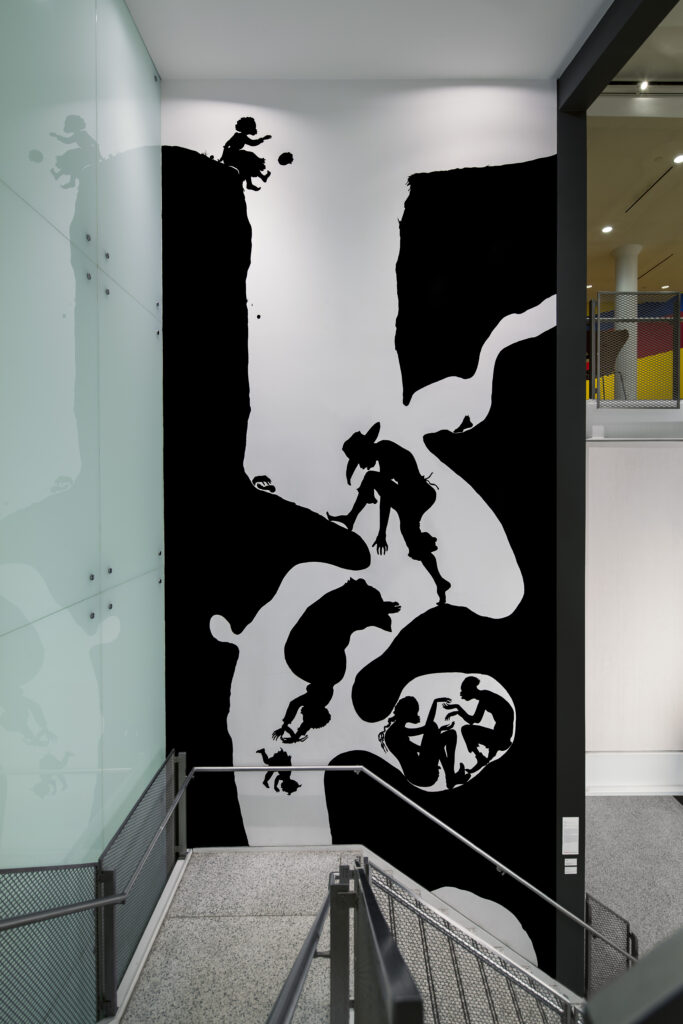
I was likely late and rushing to a meeting when I first saw Kara Walker’s Event Horizon on walls of the lobby staircase in 55 W. 13th Street. I can’t recall if I stopped but I remember how I felt: I was proud. Here I was, working at university who commissioned a work by Kara Walker—whose work spoke to me ineffably and was provocative in a way I deeply admired.
I’m embarrassed now to mention this pride, not only because of its over-simplicity, but also because of my white colonial lineage, which may well have played a deplorable part in slavery and the degradation of black Americans. But then, it was an uncomplicated, unexamined feeling, which buoyed me during a difficult time in my life when I clung to uncomplicated pleasures. Seeing Event Horizon was a reminder of The New School’s progressive heritage, confirmation that I toiled day after day for the greater good; I wasn’t simply facilitating the education of young product or fashion designers, I was part of an institution concerned with civic engagement and social justice. Like Walker’s work, The New School was not afraid to address inequity and expose brutality. We should all be so lucky to work somewhere that reflects our values.
As is so often the case, things changed. I began to work in different areas within The New School, namely financial aid, often times for underrepresented students. I soon became acquainted with the complex relationship between social justice and The New School’s tuition dependence. Universities like ours that rely heavily on tuition revenue find themselves in a challenging place in terms of equity via scholarships. I have since seen first-generation college students here go into tremendous debt for a Bachelor’s degree. At times, this can be as difficult to look at as the disembodied body parts in Event Horizon.
I am still moved by Event Horizon and continue to admire The New School’s commitment to provocative art, especially by women of color. But I no longer hurry up those stairs feeling uncomplicated pride. I now think about the low income students I know who struggle to stretch their financial aid to cover three meals a day; I think about the students of color I’ve met who’ve confided in me about feeling alienated in the institution. Recently, I also found myself wondering how much the commission for Event Horizon cost, and how many scholarships that money could have provided.
I wouldn’t change anything about the experience of Event Horizon but I would ask us to consider how our commitment to equity and social justice relates to our cost of attendance and financial aid practices.
What would it take for a work of art hanging in our hallways to make a social and political impact that shifts institutional practices?
What do we mean when we say we are an institution committed to social justice, particularly in relation to student support?
Can we be as proud of our commitment to racial and economic diversity as we are of the commitment to social responsibility in the art collection?
Susan Austin
Staff, Parsons The New School for Design

